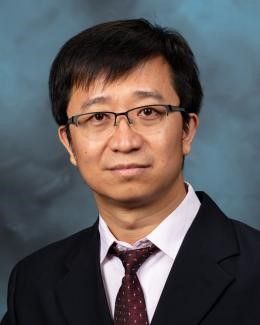Biographical note: Dr. Huibo Cao is a senior staff scientist in the Neutron Scattering Division at Oak Ridge National Laboratory (ORNL). He earned his Ph.D. in Condensed Matter Physics in 2007 from the Chinese Academy of Sciences, where he studied macroscopic quantum tunneling in single-molecule magnets. Dr. Cao continued his research at Laboratoire Léon Brillouin in France, focusing on frustrated magnetism using neutron scattering techniques. Since joining ORNL in 2009, he has primarily been responsible for the DEMAND single-crystal neutron diffractometer at the High Flux Isotope Reactor. Recently, he has extended his expertise to the Elastic Diffuse Scattering Spectrometer, CORELLI, at the Spallation Neutron Source. In 2018, he was awarded the U.S. DOE Early Career Award to advance polarized neutron diffraction techniques for the study of quantum materials.
Lecture 41: Huibo Cao
Chirality and magnetic symmetry
Huibo Cao
Neutron Scattering Division, Oak Ridge National Laboratory, USA
caoh@ornl.gov
Abstract
Neutrons, with their intrinsic spin and lack of electric charge, provide a powerful tool for investigating atomic-level structures and dynamics under extreme conditions. Nuclear and magnetization density measurements have been foundational in advancing quantum crystallography. Recently, there has been growing interest and continuous breakthroughs in the study of structural chirality, topological spin order, quantum entanglement, altermagnetism, and other related quantum and topological phenomena. Ab initio calculations, Hamiltonian modeling, and artificial intelligence are increasingly complementing experimental discoveries, accelerating progress in the field.
In this talk, I will present findings on chirality and magnetic symmetry as revealed by neutron scattering techniques—such as polarized neutron diffraction, diffuse scattering, and inelastic neutron scattering—alongside rapid computational modeling approaches. These developments are shedding light on complex quantum phenomena and transforming our understanding of quantum materials. I look forward to engaging in discussions on these exciting topics, which are closely related to quantum crystallography.
References
[1] M. Marshall et al., Nat. Commun. 14, 3641 (2023).
[2] Q. Ma et al., J. Appl. Cryst. 56, 1229-1241 (2023).
[3] L. Ding et al., Nat. Commun. 12, 5339 (2021).


